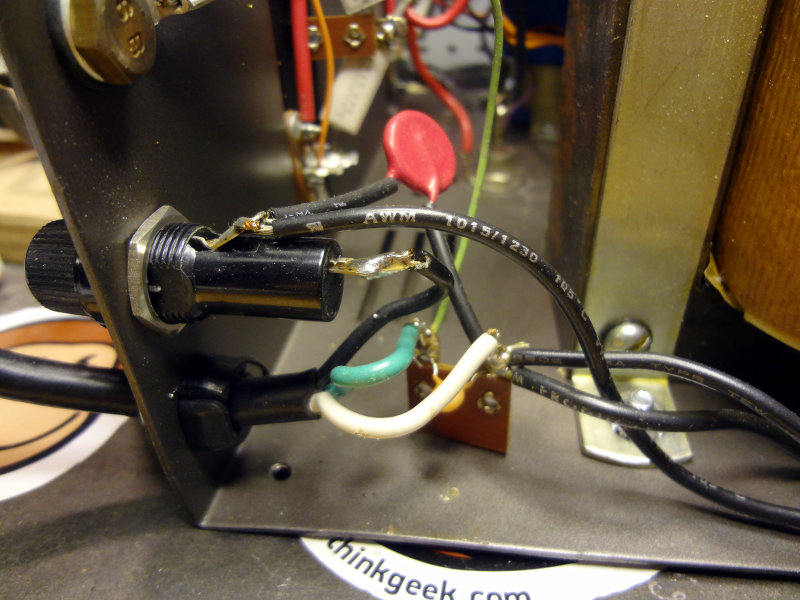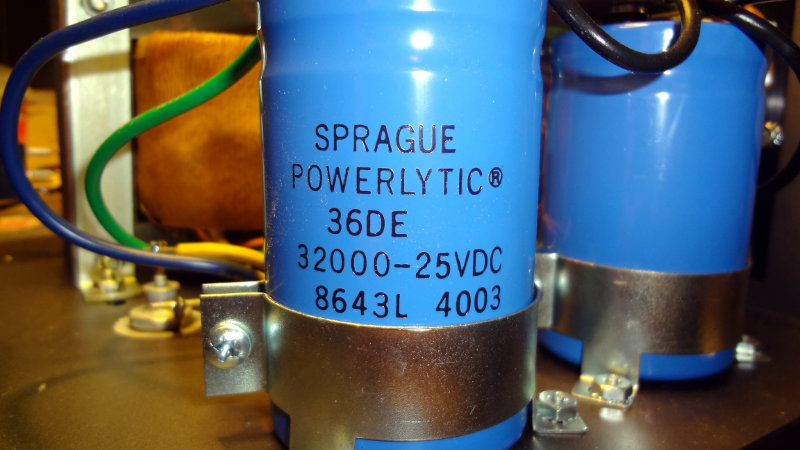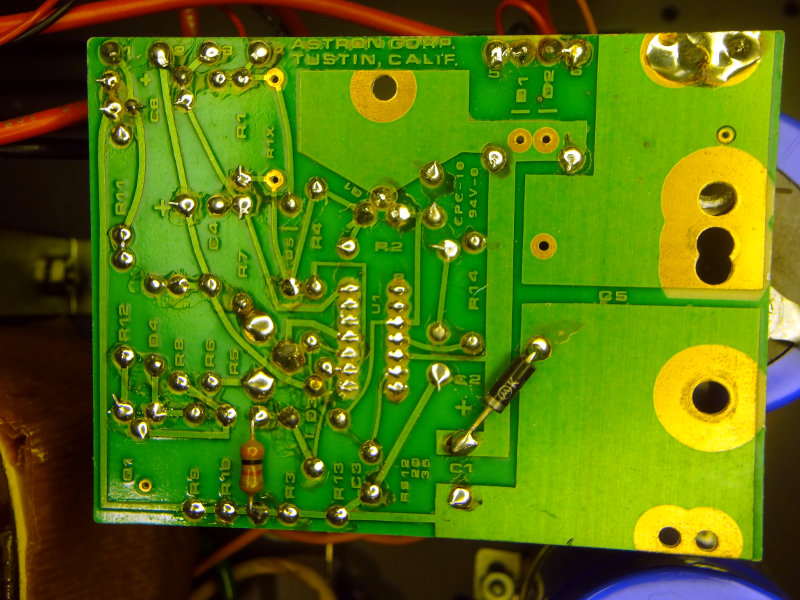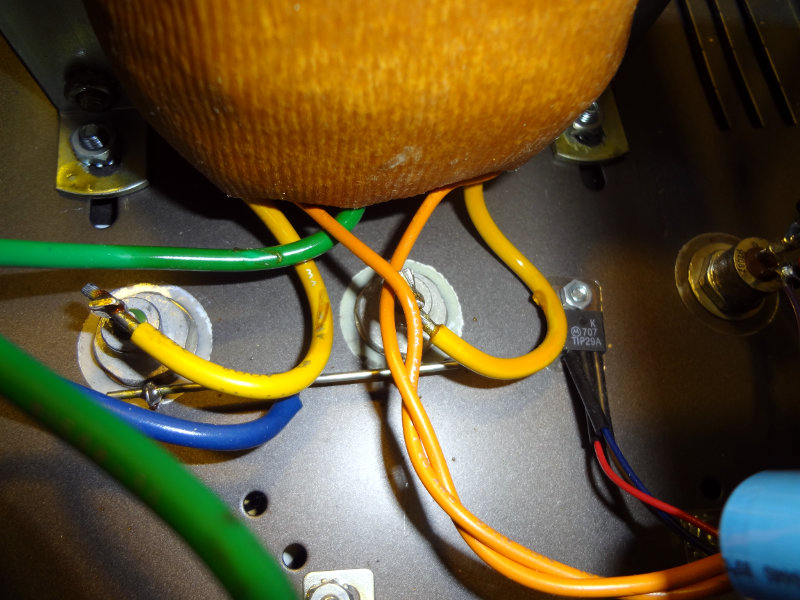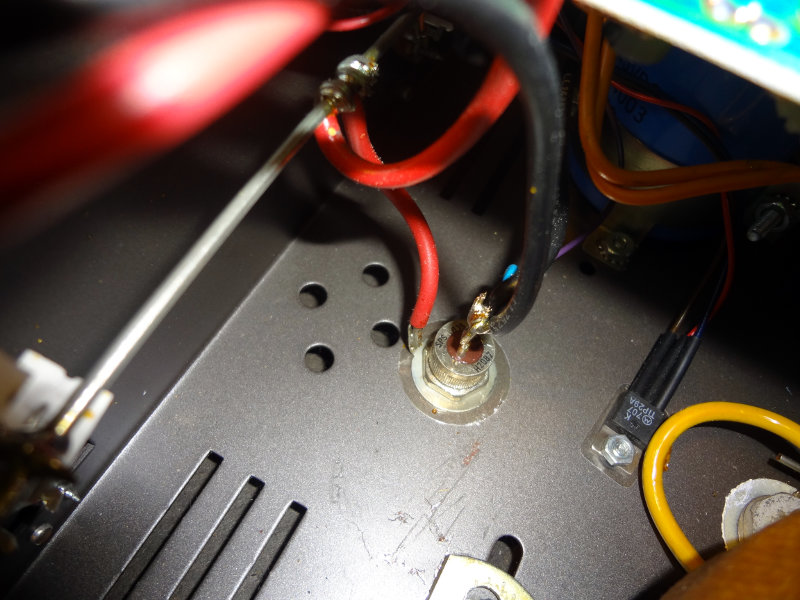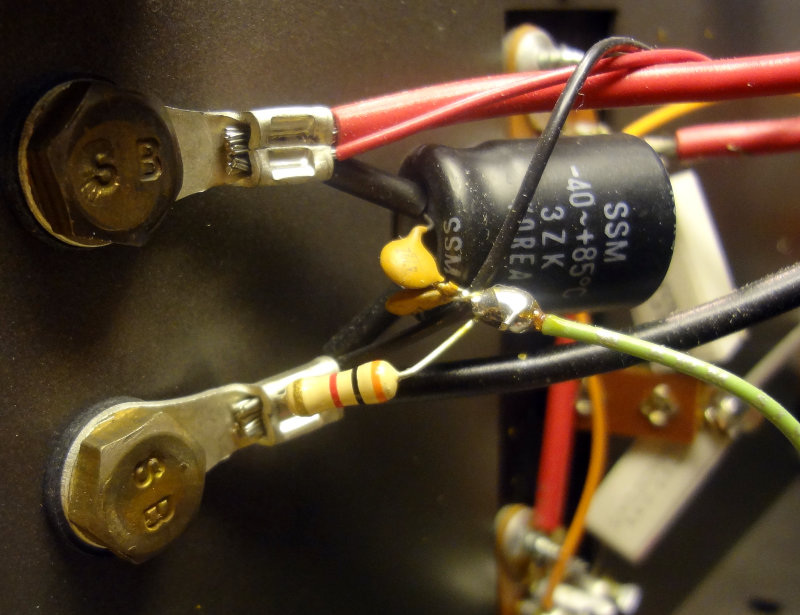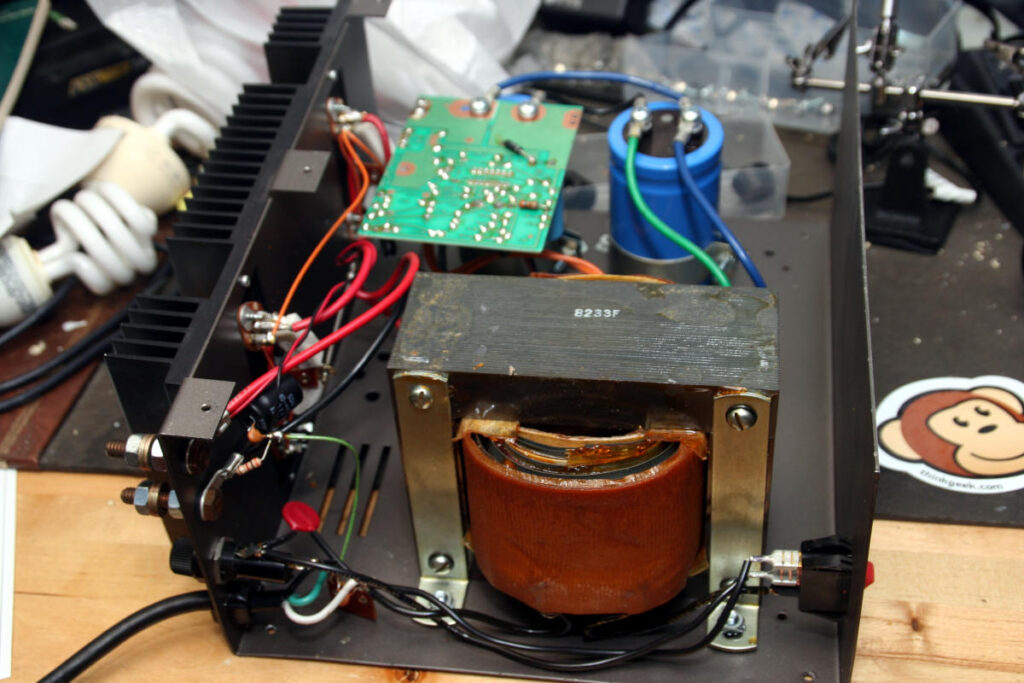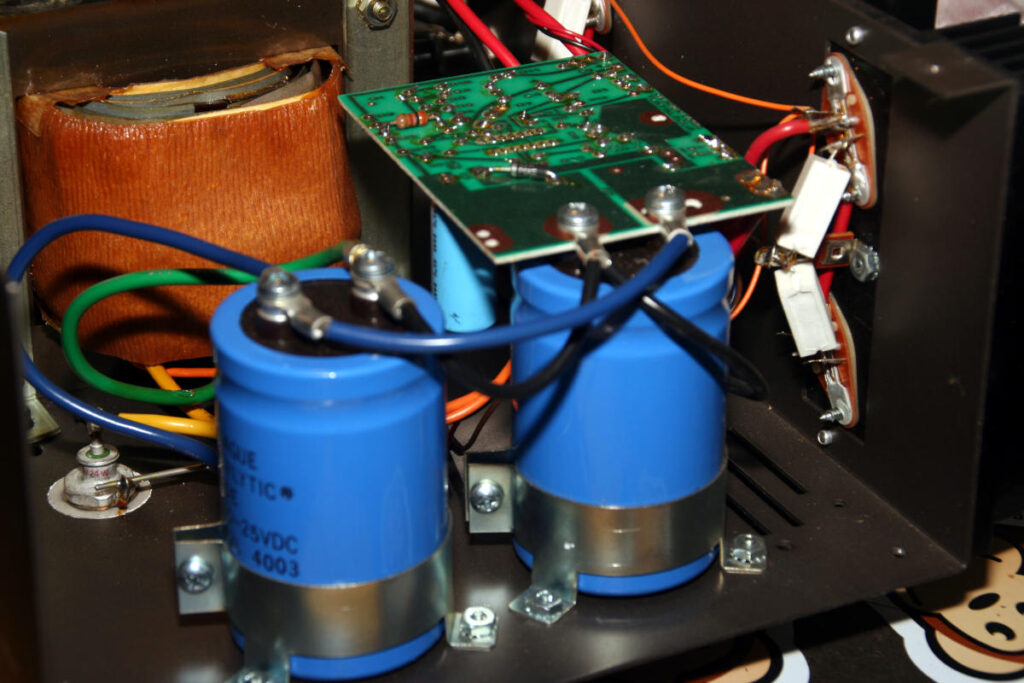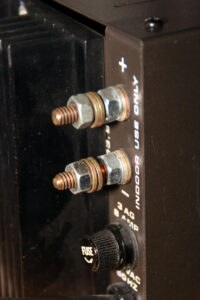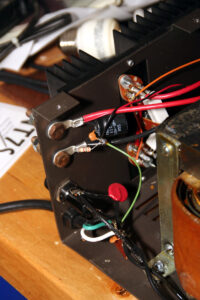Spent some time poking around inside my Astron PS with a schematic in hand. It was interesting having another look inside and examining things a little closer.
With the schematic, I was able to identify a few components that I didn’t immediately recognize. At the AC input side, I found a varistor, VR1, (150L10) in between the fuse and the switch, rather than between the switch and the transformer as shown on the schematic. None of the schematics I see show it like that so it makes me wonder if the PS has had some “work” done to it.
Here’s the wiring on the AC input side
The schematic shows a 64 mF 25V electrolytic capactor (C5) filtering the output of the transformer, but in my unit that was accomplished with two large 32 mF capacitors in parallel. Probably easier that way. A 64 mF capacitor would be pretty big.
Output from the transformer goes into the control board which handles regulating the output of the power supply.
The 2N3771 pass transistors are easily seen on the back of the power supply where the heatsink takes up pretty much the whole rear panel. On the inside 0.05 Ω 5W power resistors hang off them.
The high current output of the transformer goes into a couple of 1N1184A power diodes that appear to be set up to do simple half wave rectification. Schematics in later models show a pair of bridge rectifiers doing full wave rectification on the transformer output. The newer models probably produce a lot less ripple in the output waveform than mine does. My power supply has the 1N1184A diodes (CR101 and CR102) bolted to the chassis. The thick yellow wires feed the diodes and the thinner orange wires go to the control board. The green wire is a center tap off the transformer and goes to the negative terminal of one of the 32mF capacitors.
Also bolted to the chassis is a TIP29A transistor (Q2) using the chassis as a heat sink. Later models have this on the control board with a small heat sink.
Another diode looking thing is bolted to the chassis, which according to the schematic is a S0535H diode (SCR1). I can’t confirm this using the text stamped on it though.
This leads to the output of the power supply, which has a 2200 μF capacitor (C101) across the output terminals. Where the schematic shows just a single 10 nF capacitor also across the output terminals, mine has what appears to be two 47 nF capacitors (some older schematics show them as 10 nF caps) each connecting one terminal of the 2200 μF capacitor to ground, along with a 3000 Ω resistor from the negative terminal to ground. This is something that I saw on earlier schematics, but not on later ones. Apparently they’re for filtering out sags or spikes if the load on the output changes.
